Pain Vs Posture – an article written by Dulan Kodikara, one of our Sports Physiotherapists…
Opening Hours : Mon-Thu: 8.30am - 7.00pm Fri: 8.30am - 1.00pm Sat: 9.00am - 12.00pm
Contact : Ph: 03 9707 4452 Email: reception@physiofit.clinic
Pain Vs Posture – an article written by Dulan Kodikara, one of our Sports Physiotherapists…

Congratulations to Lisa V. on winning the Prescription Pillow, kindly donated by Health Innovations Australia… For more information on these fabulous products by Health Innovations, please click here https://healthinnovations.net.au/
Congratulations also to Tayla B. for winning a pair of Archies Arch Suport Thongs….just in time for summer too! These thongs are fabulous for the whole family and are for sale here at the clinic for only $35 (or 2 for $60)…for more information visit https://archiesfootwear.com.au/
Our final lucky winner, Xavier will hopefully get some benefit with one of our Spikey Massage Balls which are fantastic for releasing muscle tension.
Thank you to all our new and existing clients for supporting our clinic and we look forward to helping you in the future 🙂
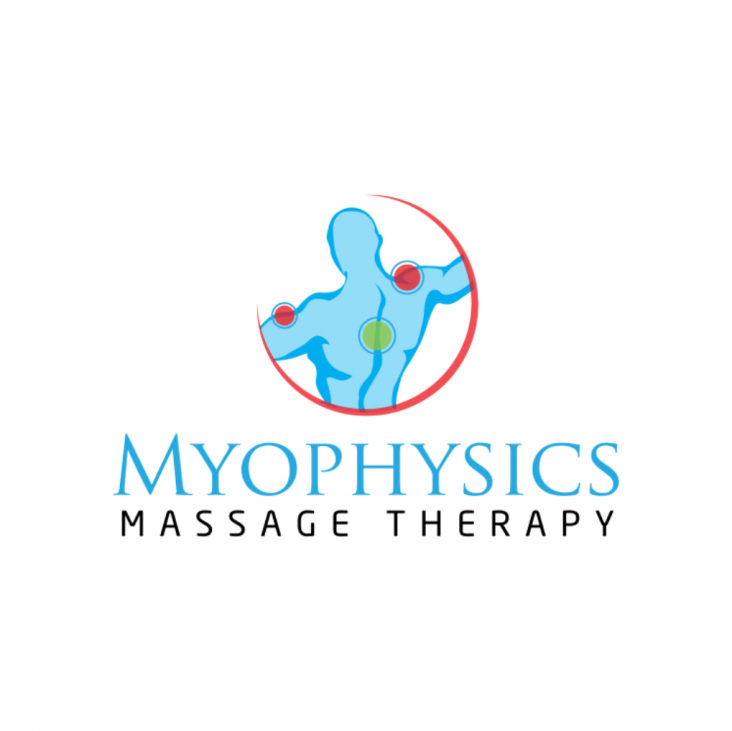
PhysioFit is very pleased to welcome Josie Botes from MyoPhysics Massage!
Appointments are available on Wednesdays, Thursdays, Fridays & Saturdays and can be made by calling the clinic or online through her website www.myophysicsmassage.com.au
Josie specialises in Remedial and Sports Massage, and also offfers Deep Tissue Massage, Relaxation Massage, Cupping Therapy, PNF Stretching, Mobilizing Massage and Muscle Energy Techniques.
For more information about Josie, treatment options and prices please click here

Remember, when using either a cane or crutches, make you home as user-friendly as possible to prevent any slips or falls…
Some basic rules of use are…
CRUTCHES:
CANE or SINGLE CRUTCH:

We are very happy to welcome Graeme Wilson, from Akoonah Podiatry. With more than 22 years’ experience in Podiatry, Graeme can certainly help with all your podiatry needs, including…
Graeme completed his Bachelor of Podiatry from La Trobe University in 1995 and initially worked in Community Health settings in south eastern Melbourne. Graeme then began a private practice partnership which extended into five locations across Melbourne and country Victoria.
Graeme has worked extensively with allied health professionals including Physiotherapists, Myotherapists and Chiropractors across several private practice settings and has completed further education including trigger point/dry needling courses, enhancing his treatment skills and patient outcomes.
Graeme played state league basketball for the Melbourne Tigers Basketball Club as a junior and has of recent times completed several fun runs including competing in the Gold Coast Marathon Running Festival in 2014. Graeme is a level 2 accredited athletic coach and has assisted the Casey Little Athletic club in various roles in the past 4 -5 years.
Graeme enjoys being involved in his three children’s sporting lives which has included coaching and support roles for the Beaconsfield Cricket and Football clubs. He is looking forward to the next phase of his podiatric career, working within the community that he lives and is actively involved in.
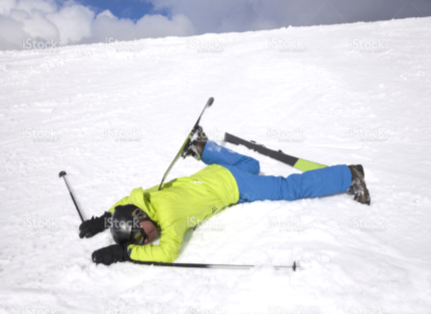
The snow season is well and truly here again with the resorts in full swing…
The majority of skiing injuries occur traumatically, often the result of a fall or collision with another skier or object, such as a tree.
Skiing injuries commonly involve the knee, shoulder, wrist, thumb, head and neck.
These injuries often include ACL and MCL ligament sprains/tears, medial meniscal tears, quadriceps and groin muscle strains, thumb joint sprains and shoulder dislocations, fractures and bruising, and often concussion, with some being quite serious requiring surgical management.
If you do receive an injury, the best advice is to get it treated as soon as possible.
Prior to treatment – initial RICE management is suggested (Rest, Ice, Compression, Elevation). Avoid alcohol, and no APRE ski.
If you do require treatment, PhysioFit will endeavour to help you within 24 hours. Please phone 03 9707 4452 to book an appointment.
At PhysioFit Berwick, we offer the following services:
Avoid Skiing Injuries!
Physiotherapist have been treating ski injuries for years and have been able to produce an accurate account of the “how, when, who, why and where” of injuries.
Critical periods for injury:
Quick tips to help avoid injury:
Injuries do occur however careful you may be. Our physiotherapists understand the mechanism and treatment of ski injuries so you can trust that you will be in good hands in the unfortunate event of an injury.
For a printable version, please click HERE.
A question regularly asked is “when should I use heat or ice?”…well, as a general rule ice is used with acute/recent injuries and heat can be used with chronic/long-term injuries…
Ice therapy (cryotherapy) can relieve symptoms caused by sprains, strains, bruises and tendinitis – it can virtually be used in any situation in which superficial tissues are inflamed by trauma. It can also assist in recovery from repetitive strain injuries such as tendinitis, and it works by reducing blow flow to the injured areas, thus reducing inflammation and swelling that causes pain. Ice should be applied immediately after your injury, for 15 minutes every two hours, over the first 48 hours (also keep in mind the RICE rule with acute injuries – Rest, Ice, Compression, Elevation).
Heat therapy works by improving circulation and blood flow to a particular area due to increased temperature. Increasing the temperature of the afflicted area even slightly can soothe discomfort and increase muscle flexibility. Heat therapy can relax and soothe muscles and heal damaged tissue. Heat can be used before (not after) activities that irritate chronic injuries such as muscle strains and overuse injuries, and can help loosen tissues and relax injured areas. Heat should not be applied for longer than 20 minutes at a time.
Of course, please consult your physiotherapist for professional opinion and management of your injury.

Playing tennis with the correct grip size is crucial to performance, and the prevention of injury. Selecting the most optimal size grip for your hand size will enable you to use your racquet more efficiently and effectively. The goal is to get optimal hand surface which allows you to grip the racquet with less effort.
Why? The right grip size enables your forearm and hand muscles to be at an optimal length/tension relationship and joint structures to be in a more neutral position, thus improving your tennis…well hopefully! Incorrect grip size can cause arm, wrist and forearm injuries such as: tennis elbow, tendinitis/tenosynovitis, wrist sprain or pain and shoulder injuries.
With a grip too small, you will try to compensate for less contact area by squeezing harder than you should, which increases your risk of tennis elbow. You also need to avoid the premature muscle fatigue that results from having to hang on to the racquet with a tight grip. The grip should always feel comfortable.
Overgrips and overwraps can increase the overall size of the grip by sometimes as much as a full grip size. When purchasing your racquet, you may need to get a smaller grip size to accommodate using an overgrip in the future. Keep in mind that grip sizes can be made bigger, but it is near impossible to make a grip smaller than it’s original size.
When purchasing a racquet don’t guess or compromise – measure!
Click HERE to print your information brochure “How to measure your tennis racquet grip size”
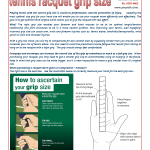

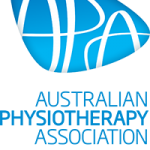 Each year, on 8 September, we celebrate World Physiotherapy Day, a global event recognising the incredible role physiotherapists play in the community and the relationships that patients have with their physiotherapist. The theme for this year’s World Physiotherapy Day is ‘add life to years’.
Each year, on 8 September, we celebrate World Physiotherapy Day, a global event recognising the incredible role physiotherapists play in the community and the relationships that patients have with their physiotherapist. The theme for this year’s World Physiotherapy Day is ‘add life to years’.
Physiotherapy helps Australians of all ages be active, stay independent and have quality of life.
Physiotherapists are health professionals who play a key role in helping people with long-term conditions achieve their goals, fulfil their potential and participate fully in society. They work with people to maximise movement and functional ability. If you have problems that affect your mobility, ask a physiotherapist, the qualified experts in movement and exercise.
As the peak body representing the interests of Australian physiotherapists and their patients, the APA are passionate about championing rehabilitation. The APA represents more than 23 000 members who conduct over 23 million consultations each year. On World Physiotherapy Day, we promote awareness of the benefits of physiotherapy in the prevention, maintenance and treatment of injuries to ensure all Australians can add life to years.
This World Physiotherapy Day, the APA is launching a community mosaic showcasing the different ways everyone can add life to years. Have a place in the mosaic by sharing your photo on social media using the hashtag #addlifetoyears.
Our ambassador
One of Australia’s most celebrated athletes, Steve Moneghetti, an Australian long-distance runner, has joined the APA as the ambassador for this year’s World Physiotherapy Day to help improve the quality of life for Australia’s ageing population.
‘I know the importance of listening to my body and using physiotherapists to help me achieve my best,’ Moneghetti said. ‘I have seen the difference physiotherapists can make, but I am lucky as many people have little understanding of the important role health experts such as physiotherapists play in the maintenance of a functioning, strong and healthy body – and I want to change that. Physiotherapy can change our quality of life dramatically and it can literally add life to years for our ageing population.’
Steve is proud to share how physiotherapy, as well as his running, will add life to years.
Do you live with body aches and pains?
Speak to your local APA physiotherapist Mark Eibl at PhysioFit Berwick! Ph: 9707 4452 Email: reception@physiofit.clinic
Pain has been part of the human experience longer than magnetic bracelets, ergonomic chairs, whiplash and repetitive strain injury. Yet it is just in the last few decades that we have realised how terrifically complex pain really is and how wrong many of our assumptions about pain really are.
Pain is an important issue. Its impact on our society is staggering – more Australians suffer from chronic pain than diabetes, cardiovascular disease and cancer combined. Every day, chronic pain and its management costs Australia almost a million dollars. How can this be?
In this fascinating Knowledge Works lecture, Professor Lorimer Moseley, Physiotherapist at the University of South Australia, will examine two important questions – “Why does it hurt?” and “Why does it still hurt?” He will share findings from his international research investigating the role of the brain and mind in chronic pain disorders.
Berwick, Beaconsfield,Officer tradies encouraged to watch more than just their backs during Tradies National Health Month
Australian Physiotherapy Association leads the annual Tradies National Health Month during August, 2016
In this next u-tube video featured above, Kyal and Kara provide five important tips for our tradies to ensure they are looking after their bodies on and off the job.
MEDIA RELEASE
Physiofit Berwick physiotherapists are calling on tradies in Casey and Cardinia to watch more than just their backs during Tradies National Health Month this August. It comes as Australia’s tradies continue to have among the poorest health and safety conditions of workers across all sectors.
The Australian Physiotherapy Association (APA) leads Tradies National Health Month to educate Australian tradies to keep a check on their safety, health and wellbeing, and to help minimise the risk of serious injury for our labourers, technicians, machinery operators and drivers, amongst other tradie groups.
Berwick, Beaconsfield,Officer tradies encouraged to watch more than just their backs during Tradies National Health Month
Australian Physiotherapy Association announces annual Tradies National Health Month for August 2016
MEDIA RELEASE
Physiofit Berwick physiotherapists are calling on tradies in Casey and Cardinia to watch more than just their backs during Tradies National Health Month this August. It comes as Australia’s tradies continue to have among the poorest health and safety conditions of workers across all sectors.
The Australian Physiotherapy Association (APA) leads Tradies National Health Month to educate Australian tradies to keep a check on their safety, health and wellbeing.
Tradies have among the highest serious injury and disease compensation claims in Australia, according to Safe Work Australia data. Labourers, technicians, and machinery operators and drivers are among the top four occupations when it comes to number of serious injury claims.
The majority of serious claims are from injuries and musculoskeletal disorders, including traumatic joint, ligament, muscle and tendon injuries. While backs still present the highest proportion of body stress injury claims, other body parts affected include upper limbs, lower legs, hips, the abdomen and the pelvic region.
Research also shows tradespersons, labourers and workers across the agricultural and construction industries have high risks of chronic health conditions.
APA physiotherapist Mark Eibl says it is important to remind tradies that their health and safety is a priority.
“This Tradies National Health Month, we want tradies to look after all aspects of their health and wellbeing,” Mark Eibl said. “Everyone—from tradies to their employers, unions and the communities and governments that rely on them—has a role to play in getting our tradies to be proactive about managing and preventing health conditions. It starts with seeking evidence-based treatments like physiotherapy.”
From musculoskeletal support, physiotherapists extend their care into chronic health impacts, like heart disease and diabetes, and the lesser-known pelvic floor issues men face. Physiotherapists are experts in helping to reduce the alarmingly common health and safety issues associated with working in labour intensive industries.
The Block and Reno Rumble favourites Kyal and Kara Demmrich (‘The Super Ks’) will help lead the campaign, using their respective backgrounds of carpenter and physiotherapist to spread the message that health and wellbeing must be tradies’ most important tools (See U tube video below).
For more information visit www.tradieshealth.com.au or www.physiofit.clinic or phone Physiofit on 97074452.
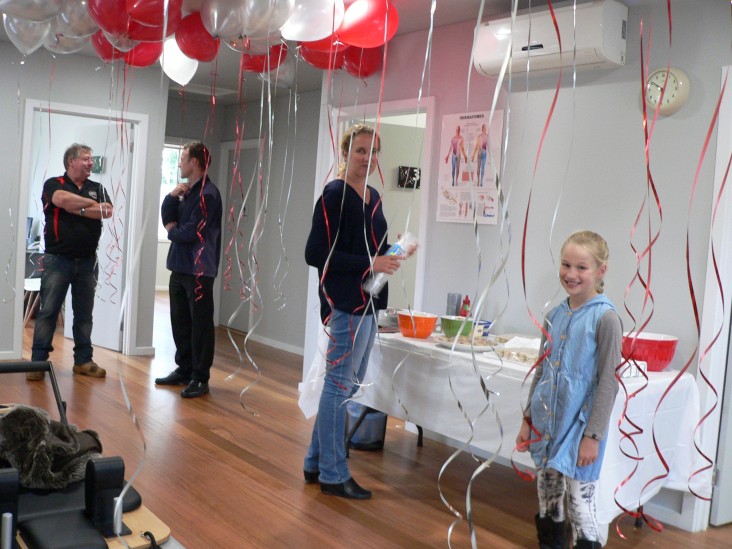
We opened the doors to appointments on Monday 25th Jan, 2016 – only 2 short weeks ago – at PhysioFit Berwick. We have had a terrific response to the first few weeks of opening. Thanks to all who have supported the clinic in our infancy and opening weeks.
The launch event was a terrific success – thanks to all of those who attended – what a great start to PhysioFit Berwick. We had a crowd attend the launch, including including many children who seemed to enjoy the sausage sizzle and the helium balloons.
It is still very early days – if you are interested in just taking a walk through the premises and meeting Mark, please just drop by and our friendly receptionists Leanne and Cathy will anwer your questions and give you a quick tour. We look forward to providing a high quality physiotherapy service for Berwick-Beaconsfield-Officer in the coming years.
Mark Eibl, Physiotherapist

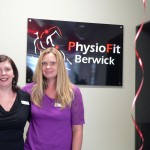

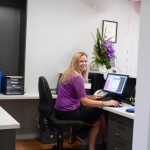
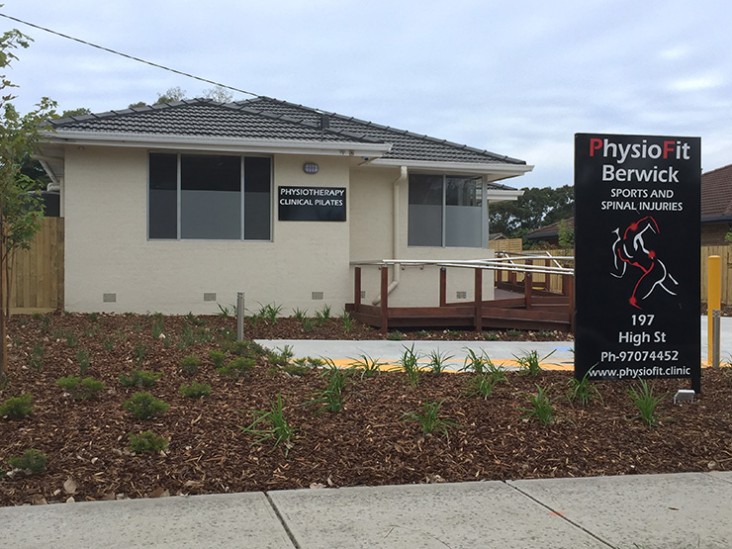
Wow! So exciting to be at this point – we opened the doors to appointments today (Monday 25th Jan, 2016) at PhysioFit Berwick. We have 12 patients booked in across the day, but we hope for a few more walking in, calling in or booking in online during the day. Thank you to my most loyal patients and of course, our very first new patients, for supporting PhysioFit Berwick.
It has certainly been a journey over the past 6-8 months! There have definitely been a few challenges, including meeting the requirements for the building/council and getting power connected (SP Ausnet took 3 months to do a 15 minute job, but we do have power now!). The support from friends and family has helped me through these few challenging months, and I am now looking forward to the first few weeks and beyond for this new stage of life and career as a business owner and practitioner.
Most of all, I am really looking forward to starting work (how lucky am I!), and I’m energised to begin treating my clients.
If anyone is in the area, please drop by during the official launch / opening event to be held this Friday 29th January from 6:30pm. Come in, take a tour, meet the team, my family and enjoy a canape and a drink with us. Sausage sizzle for the kids as well!
Hope to see you there……
Mark Eibl, Physiotherapist
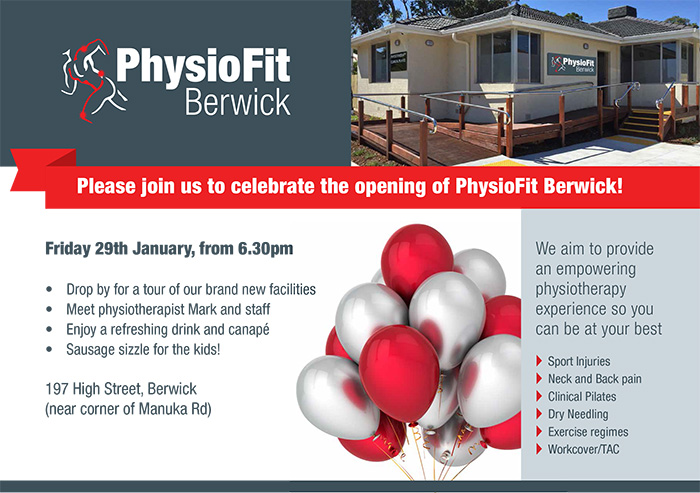
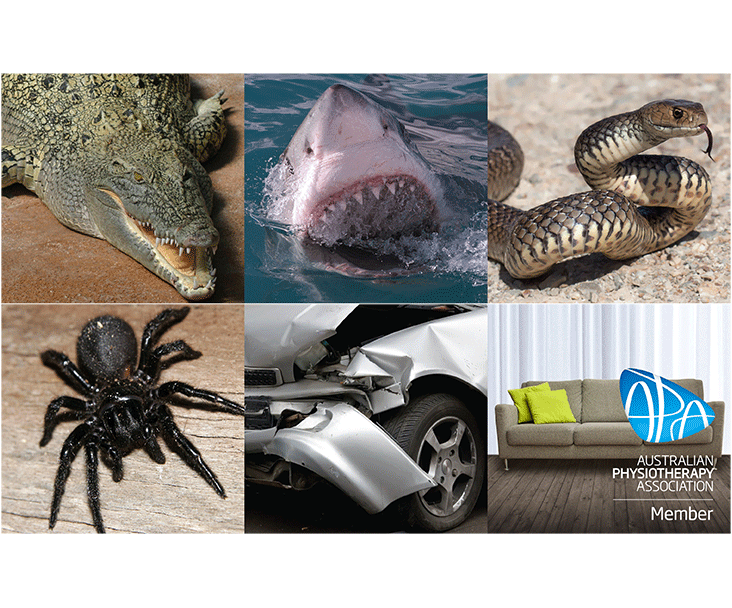
It’s widely known Australia’s wildlife can be dangerous, but there is an even bigger killer in most households that many of us are unaware of its devastating impact.
That killer is the couch.